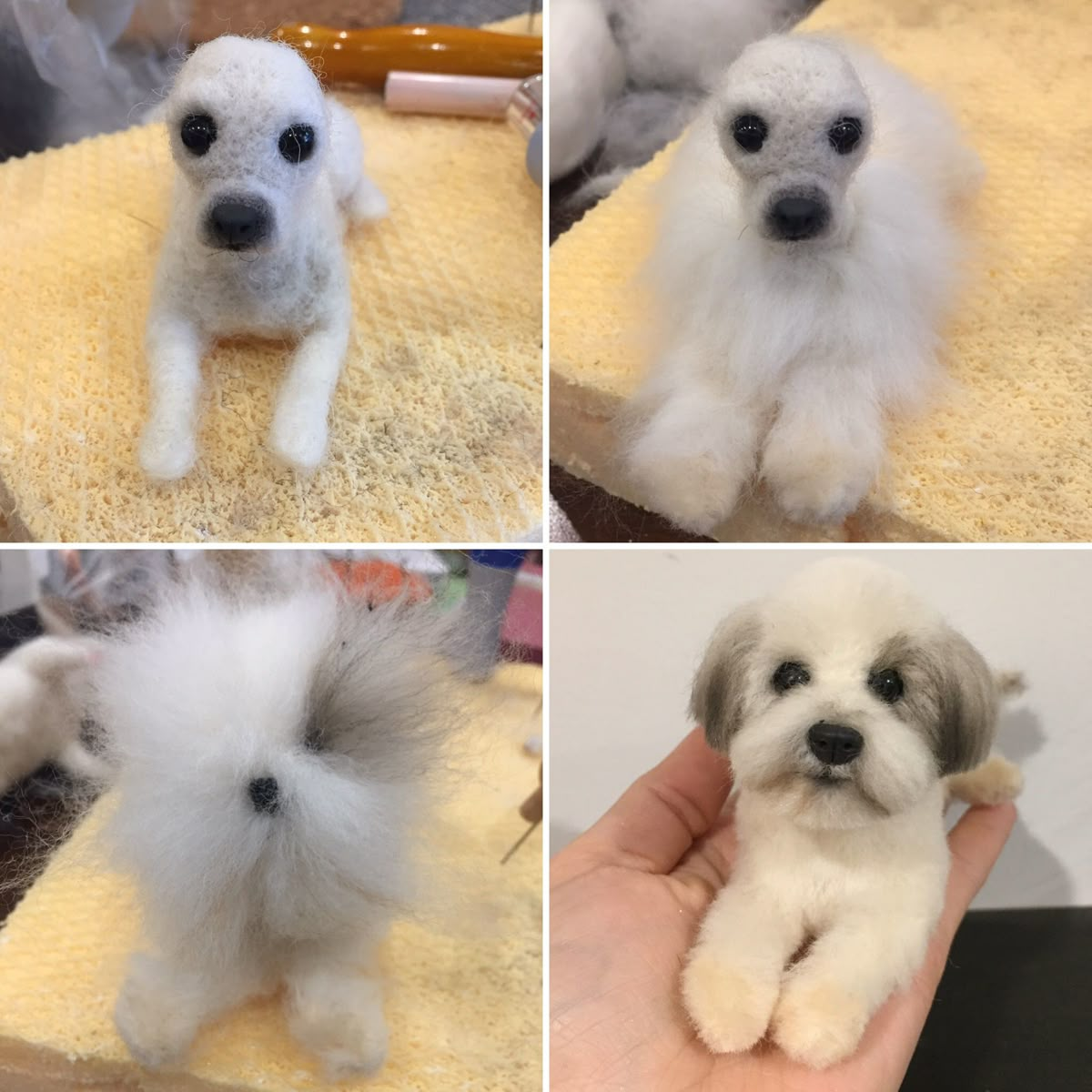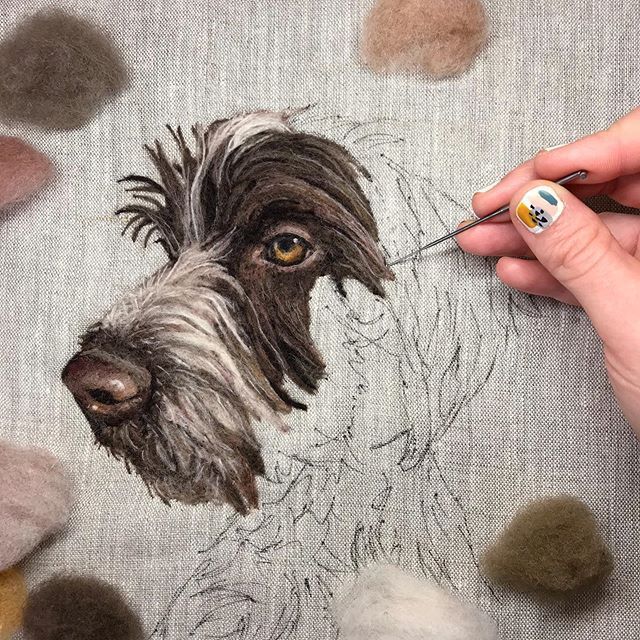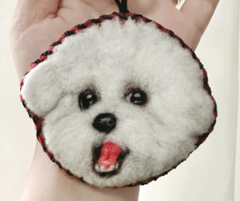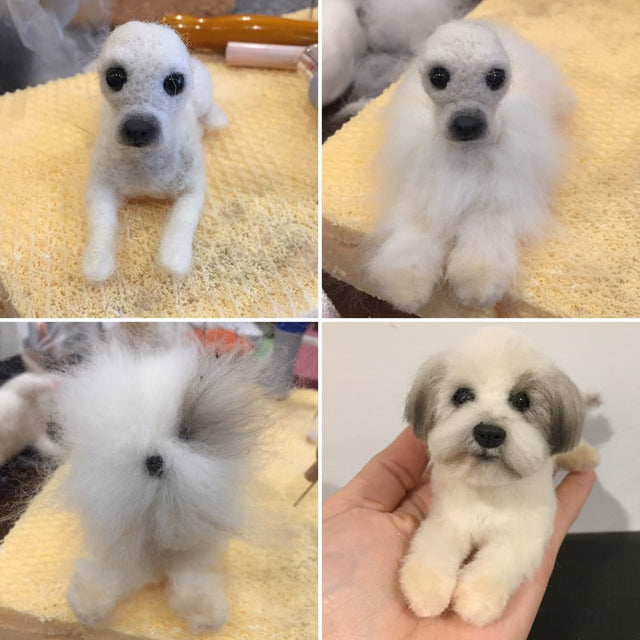Understanding Needle Felt Painting and Its Unique Techniques

Needle felt painting lets you make pretty pictures with wool. You use a special needle to poke wool onto fabric. The wool fibers stick together and make colorful shapes. Many people like this craft because it is fun and calming. You do not need hard skills to start. Most beginners think it is easy and fun. Friendly groups and simple kits help you learn fast. Many pet lovers use needle felt painting to remember their pets in a special way.
Key Takeaways
Needle felt painting is a fun and easy craft that uses wool to create colorful, flat pictures.
You can start with simple projects, like pet portraits, to build your skills and confidence.
This craft is a great way to honor and remember your pets through unique keepsakes.
Using different colors and layers of wool adds depth and detail to your artwork.
Joining online groups and watching tutorials can help you learn and share your needle felt painting journey.
What Is Needle Felt Painting?
Definition
Needle felt painting is a special form of needle felting. You use wool fibers and a sharp, notched needle to make flat, colorful pictures. Many people call it "painting with fleece" because you create images with wool instead of paint. This art form lets you make 2D artwork, such as portraits, landscapes, or even creative pet memorials. You can use needle felt painting to celebrate your pets by turning their photos into wool art. This makes each project personal and meaningful.
Needle felting is a creative process that uses special needles to tangle wool fibers together.
Many artists and crafters enjoy needle felting because it allows for personal expression and satisfying results at any skill level.
Needle felting can create both 2D and 3D artwork, but needle felt painting focuses on 2D designs.
Needle felt painting stands out because you can use it to make unique keepsakes. Many pet lovers choose this technique to honor their pets. You can create a wool portrait that captures your pet’s spirit and personality. This makes each project a special way to remember and celebrate your furry friends.
How It Works
You start needle felt painting by choosing your wool and a base fabric, like felt or wool fabric. You place the wool on the fabric and use a notched felting needle to poke the fibers. The needle has tiny barbs that catch the wool and push it into the fabric. Each time you poke, the fibers tangle and lock together. This is how you build up shapes and colors to form your picture.
Tip: Use different colors and layers of wool to add depth and detail to your projects. This helps your artwork look more realistic and lively.
The structure of wool fibers is important for felting. Wool has tiny scales on each fiber. When you poke the wool with the needle, these scales catch and hold onto each other. Some types of wool felt faster than others. Coarser wool with bigger scales will lock together more quickly. This makes the process easier for beginners and helps you finish your projects faster.
Here is a simple table to show the difference between needle felting and other felting techniques:
Technique |
Primary Materials Used |
Process Description |
|---|---|---|
Needle Felting |
Plant, man-made, and animal fibers |
Uses a thin, notched needle to tangle fibers. Portable and works with many materials. |
Wet Felting |
Mostly protein fibers |
Uses hot water and rubbing to lock fibers. Needs more energy and time. |
In needle felt painting, you use the needle to draw shapes and lines with wool. You can blend colors and create shading, just like with paint. The process is simple, but you can make detailed and beautiful projects. Many people use this technique to make pet portraits. These projects become treasured keepsakes that honor the memory of a beloved animal.
Needle felting projects can be small or large. You can start with simple shapes and move on to more complex designs as you learn. Each project helps you practice and improve your skills. The process is relaxing and rewarding. You can see your progress with every poke of the needle.
Needle felt painting is a unique way to use needle felting techniques. You can create art that is both beautiful and meaningful. Many people find joy in making projects that celebrate their pets and keep their memories alive.
Origins and Evolution
History
Needle felting has been around for a very long time. People in Central Asia made felt thousands of years ago. They used wet felting to make warm clothes and blankets. In the 1800s, machines started using needles to make felt faster. This change let artists try new ideas and styles. Needle felt painting became its own art in the mid-1900s. Fiber artists used industrial needles to make creative pieces. In the 1980s, David and Eleanor Stanwood used handheld needles for sculptures. This helped needle felting become a popular craft. Artists began mixing felting with embroidery and beads. Now, you can blend colors in your work like watercolors or pastels.
Feltmaking started in Central Asia with wet felting long ago.
Machines in the 1800s helped make felt with needles.
In the 1980s, artists used single needles for small art.
Needle felting now mixes with embroidery and beads.
New ways let you blend colors for detailed art.
Modern Trends
In the last ten years, needle felting got much more popular. Many people started new crafts during the COVID-19 pandemic. Social media, like TikTok, helped people share their projects. You can join a big group of crafters who love new designs and fun meetups.
Now, many people use needle felt painting for pet keepsakes. You can make animals that look just like your pets. Each project lets you add special details to show your pet’s true self. These portraits help you remember happy times with your pets. Families keep these as heirlooms and pass them down.
Felt pet art takes skill and care for lifelike keepsakes.
Each portrait is special and one of a kind.
These projects are meaningful memorials for pet owners.
Many people feel happy and comforted by their felted animals.
Reviews say these portraits show each pet’s spirit better than photos.
Pawimprint supports this trend with creative pet keepsakes. You can pick from many keepsakes, like custom crystals, to remember your pets. Needle felt painting and other crafts help you celebrate your bond with your furry friends.
Needle Felt Painting vs. Needle Felting
2D vs. 3D Techniques
You may wonder how these two crafts are different. Needle felt painting is for making flat pictures. You put wool on fabric and use a needle to blend colors. These projects look like paintings made with wool. People call it "painting with wool" because you use wool instead of paint.
Traditional needle felting is for making 3D shapes. You use wool to make animals or other figures. These projects have depth and you can see all sides. You poke and shape the wool until it looks real.
2D needle felt painting makes flat art, like portraits or landscapes.
3D needle felting makes sculptures, like animals or decorations.
You use layers and blend colors in 2D art.
You build and shape forms in 3D art.
Here is a table that shows how the tools and materials are different:
Aspect |
2D Needle Felting |
3D Needle Felting |
|---|---|---|
Fabric Type |
High quality wool felt, open weave |
Various core materials (foam, wool roving) |
Project Structure |
Flat designs |
Sculptural forms |
Material Waste |
Less waste if fabric weave is tight |
More waste possible with loose cores |
Unique Features
Needle felt painting is special because it looks like painting. You use felting needles to blend and layer wool. This helps you make pet portraits and detailed scenes. You can twist wool to look like fur. This lets you show your pet’s personality in your art.
Tip: Mix different colors of wool for a soft, painted look. This makes your art look more real and full of life.
Needle felting uses special needles with tiny barbs. These needles tangle the wool fibers and lock them together. Wool fibers have small scales that help them stick. You poke the wool in different ways to shape it. This works for both flat pictures and 3D shapes.
Here is a table that shows what makes needle felt painting special:
Feature |
Description |
|---|---|
Felting Needles |
Special tools for shaping and pressing wool fibers by poking. |
Wool Fiber Characteristics |
Overlapping scales help fibers stick together. |
Shaping Techniques |
Poking in certain ways makes shapes, like sculpting. |
Many artists use needle felt painting to remember pets. You can make art that celebrates your furry friends. These keepsakes become special art in your home. Needle felting is a creative way to remember and honor your pets.
Getting Started

Beginner Tips
You can start needle felting with simple projects. Many beginners feel excited but unsure about how to needle felt. You should choose beginner-friendly projects, like apples or pumpkins, to build confidence. These small projects help you learn basic felting techniques and how to use wool roving. You will find that step by step instructions make learning easier.
Tip: Take breaks when you need to. Fresh eyes help you spot details and make adjustments.
Here is a table that shows common challenges and solutions for beginners:
Challenge |
Solution |
|---|---|
Selecting appropriate projects |
Start with simple shapes to build confidence. |
Understanding materials |
Use beginner-friendly kits with the right wool roving and tools. |
Learning techniques |
Follow step by step instructions and visual guides in kits. |
You should roll wool roving tight before you felt. This gives you a neat starting shape. Use short, controlled entries with your needle. Turn your project often to keep shapes even. Start with less wool roving than you think you need. You can always add more. Your project will shrink as you felt, so stop before it gets too dense. Be patient and work through the rough phase. Practice helps you improve your needle felting skills.
Tools and Materials
You need a few basic tools to begin needle felting. Most beginners use a notched felting needle, a felting needle holder, and a felting surface like a sponge or foam. You also need small amounts of carded wool roving. Many beginners buy a needle felting starter kit, which includes step by step instructions and all the supplies you need.
Felting needles (various sizes)
Felting needle holder
Felting surface (sponge or foam)
Carded wool roving (fine or medium-fine)
Needle felting starter kit
Books with step by step instructions
Different types of wool roving affect your final project. Romney wool roving creates a smooth surface and dense felting. Merino wool roving is soft and springy, good for wet felting but also useful for needle felting. The needle gauge and design change how your wool roving feels and looks.
You can buy supplies from popular sources like Amazon, Etsy, Living Felt, Dyeing House Gallery, and Sweet Pea Dolls. These shops offer wool roving, felting needles, and kits for all skill levels.
Needle felt painting lets you create keepsakes that honor your pets. Many beginners start with pet portraits. These projects become meaningful tributes and help you celebrate your furry friends. Pawimprint offers personalized keepsakes, such as custom crystals, that show how creative felting projects can preserve pet memories. You can use wool roving and needle felting to make art that brings comfort and joy.
Needle felt painting lets you show love for your pets and be creative. You can get many good things from this craft:
Beginners find it easy because felt is simple and forgiving.
You do not need to spend much money since only a few tools are needed.
It feels calm and fun, and people feel proud when they finish pet portraits.
You can use many colors, add small details, and even mix in things like feathers or paper.
You can join online groups and watch tutorials to learn and share your art. Try needle felt painting today and make a special keepsake for your pet’s memory.
FAQ
What is needle felt painting and how does it differ from regular needle felting?
Needle felt painting lets you make flat, bright pictures with wool. You use a felting needle to mix wool roving on fabric. Regular needle felting is for making 3D things, like animals. Needle felt painting is for 2D art, not 3D shapes.
Can beginners try needle felt painting, and what projects are best to start with?
Beginners can try needle felt painting with easy projects. Simple shapes, pet portraits, or landscapes are good for starting. Many kits have step by step guides, so learning is simple and fun.
What tools and materials do I need for needle felt painting?
You need wool roving, felting needles, a felting surface, and base fabric. Most beginner projects use starter kits. These kits help you learn the steps and techniques fast.
How do I create a pet keepsake using needle felt painting?
You can make a pet keepsake by turning a photo into wool art. Use layers of wool roving and felting to show your pet’s features. Many people think this is a special and creative way to remember pets.
Where can I find step by step instructions for needle felt painting?
You can find step by step guides in books, online videos, and beginner kits. Many websites and videos teach you how to needle felt and show different projects.

